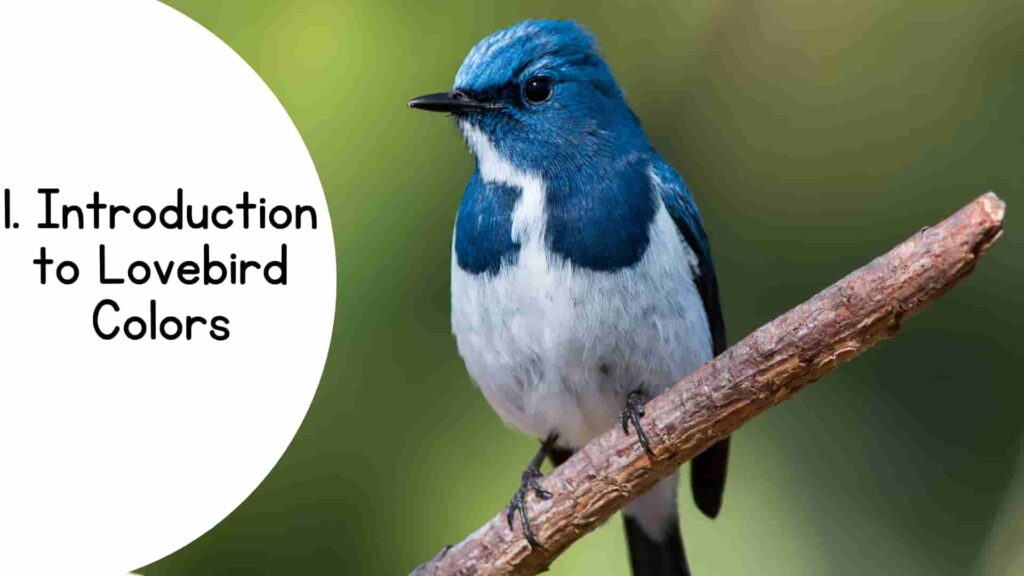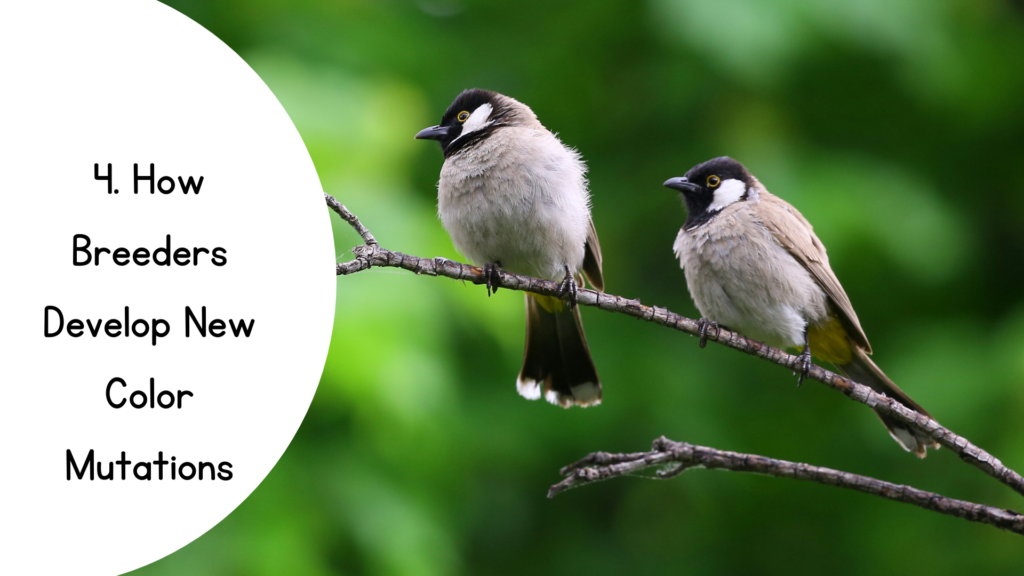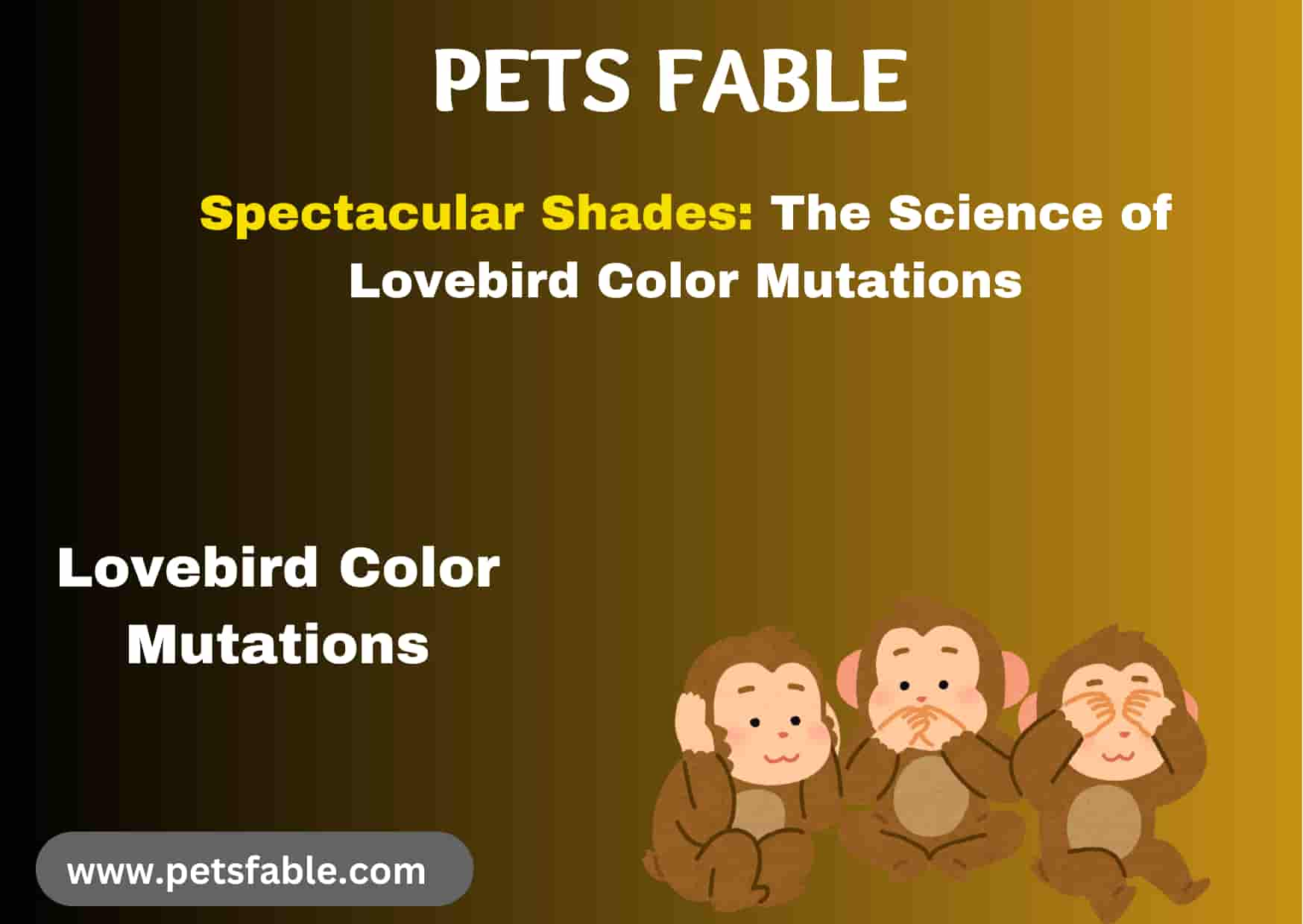Lovebird Colors, Genetics, and Mutations: A Complete Guide
Lovebirds are small, social parrots known for their vibrant plumage and strong pair bonds. These beautiful birds come in an incredible variety of colors, making them popular among bird enthusiasts.
Their fascinating color variations result from complex genetics and mutations that breeders have studied and developed over the years.
In this guide, we’ll explore the different lovebird colors, the role of genetics, and how mutations contribute to their stunning appearances.
Table of Contents
- Introduction to Lovebird Colors
- The Science Behind Lovebird Genetics
- Common Lovebird Mutations and Color Variations
- How Breeders Develop New Color Mutations
- Popular Lovebird Color Varieties
- Frequently Asked Questions About Lovebird Colors
Also read: Lovebird Colors, Genetics, and Mutations: A Complete Guide
1. Introduction to Lovebird Colors
Lovebirds (genus Agapornis) are small parrots with striking plumage. The most common species include the Peach-Faced Lovebird, Fischer’s Lovebird, and Masked Lovebird.
These species have distinctive colors, but selective breeding and genetic mutations have created an extensive palette, ranging from vivid greens and yellows to rare blues and violets.

Wild-type lovebirds, the natural coloration found in the wild, are predominantly green. This color provides camouflage in their native habitats, but captive breeding has expanded the spectrum significantly.
2. The Science Behind Lovebird Genetics
A. Basic Lovebird Genetics
Lovebird colors are primarily influenced by two types of pigments:
- Melanin: Provides darker colors like black and brown.
- Psittacofulvins: Responsible for red, orange, and yellow hues.
The interplay between these pigments and genetic mutations determines a bird’s final coloration.
B. Inheritance Patterns
Lovebird genetics follow Mendelian inheritance patterns, which means certain traits are either dominant, recessive, or sex-linked. For example:
Read more: Inheritance Patterns
- Dominant Traits: Only one gene from a parent is needed for the trait to appear.
- Recessive Traits: Both parents must carry the gene for the trait to manifest.
- Sex-Linked Traits: Traits linked to the sex chromosomes, often more common in males.
3. Common Lovebird Mutations and Color Variations
A. Blue Mutation
The blue mutation removes the yellow and red pigments, resulting in blue, white, and gray feathers. This mutation is particularly popular in Peach-Faced and Masked Lovebirds.
B. Lutino Mutation
Lutino lovebirds lack melanin, giving them bright yellow feathers with red or pink highlights. They are often recognized by their red eyes, a key indicator of this mutation.
C. Albino Mutation
Albino lovebirds are entirely white with red eyes due to the absence of all pigments. They are a result of combining the blue and lutino mutations.
D. Pied Mutation
Pied lovebirds have irregular patches of color, with some areas showing their natural pigmentation and others appearing lighter or white. This mutation creates a speckled or mottled appearance.
E. Violet Mutation
The violet mutation enhances the purple pigmentation in lovebirds, resulting in striking violet feathers. This trait is often combined with blue mutations for a richer hue.
4. How Breeders Develop New Color Mutations
Breeders carefully pair lovebirds with specific genetic traits to create new color combinations. The process involves:
- Identifying Desired Traits: Breeders select birds with distinct mutations, such as blue or lutino.
- Tracking Genetics: Detailed records help breeders understand inheritance patterns.
- Selective Breeding: Birds with complementary traits are bred over multiple generations.
- Testing and Confirmation: Breeders verify the consistency of new colors before introducing them to the market.

5. Popular Lovebird Color Varieties
A. Peach-Faced Lovebirds
Peach-Faced Lovebirds (Agapornis roseicollis) are among the most colorful species. Popular varieties include:
- Wild-Type Green: Bright green body with a peach-colored face.
- Blue Series: Sky blue to cobalt with a white face.
- Lutino: Vibrant yellow with a reddish face.
B. Fischer’s Lovebirds
Fischer’s Lovebirds (Agapornis fischeri) are known for their softer pastel hues. Common colors include:
- Wild-Type Green: Green body with an orange face.
- Blue Fischer’s: Light blue body with a white or gray face.
Also read: can-parrots-eat-watermelon
C. Masked Lovebirds
Masked Lovebirds (Agapornis personatus) have a dark face mask. Notable varieties include:
- Wild-Type Green: Green body with a black head and yellow collar.
- Blue Masked: Blue body with a black head.
- Pied Masked: A mix of green, yellow, and white patches.
FAQ’s:
Q1. What is the rarest lovebird color?
The albino and violet mutations are considered rare due to their complex genetic requirements.
Q2. Can lovebirds change color as they age?
Yes, some lovebirds may develop slight color changes as they mature, but significant changes are usually the result of molting or illness.
Q3. How can I identify my lovebird’s mutation?
Observe their plumage color, eye color, and markings. Consulting a breeder or avian expert can also help.
Q4. Are certain lovebird colors more expensive?
Yes, rare mutations like violet or albino typically cost more due to their rarity and breeding challenges.
Conclusion
Lovebird colors, genetics, and mutations showcase the beauty of nature and the ingenuity of breeders. By understanding the basics of lovebird genetics, enthusiasts can appreciate these birds even more.
Whether you’re a hobbyist or a serious breeder, exploring the world of lovebird colors opens up a vibrant, fascinating journey into avian genetics.
